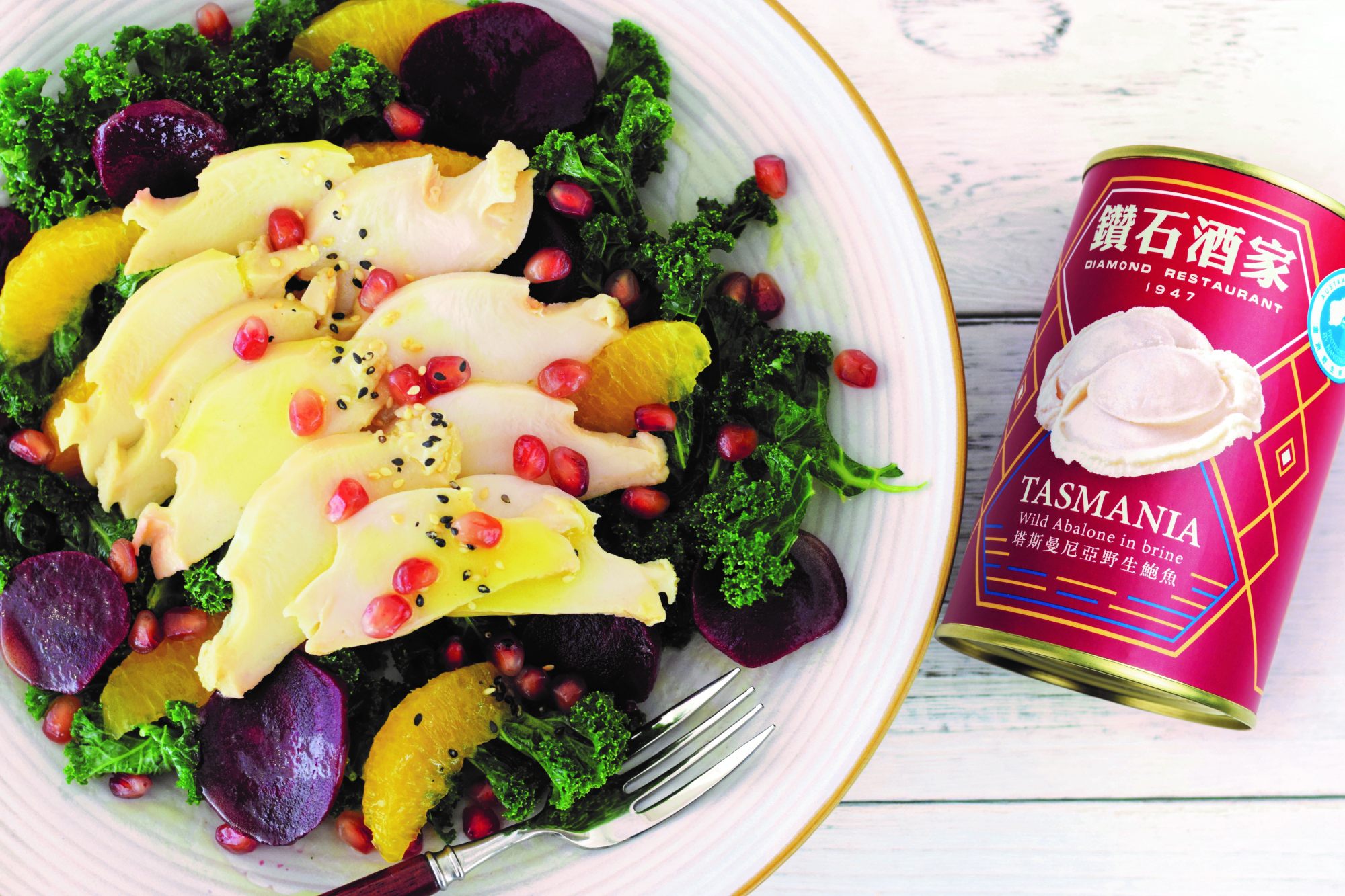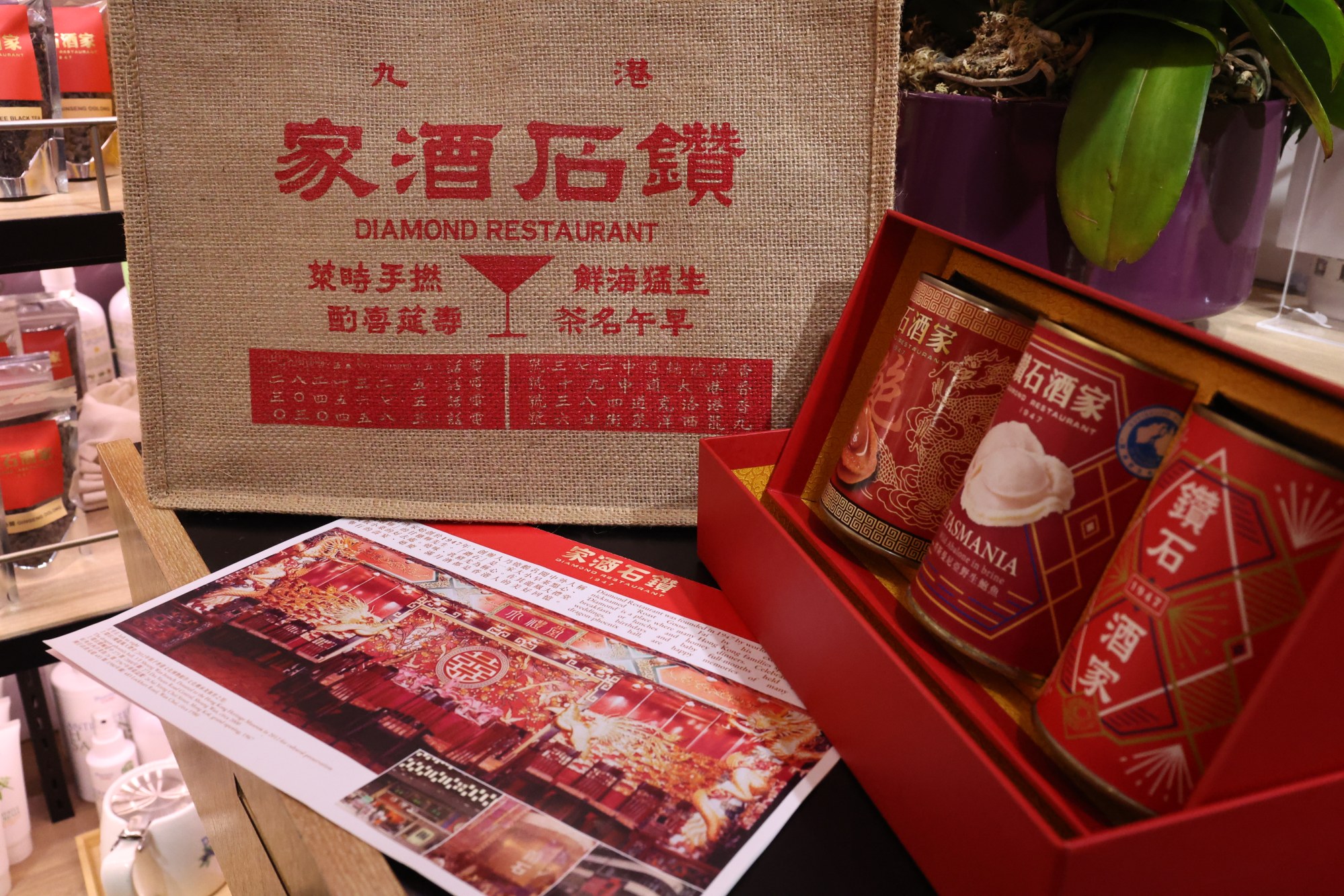
How an iconic Chinese restaurant in Hong Kong full of ‘childhood memories’ lives on: family have reinvented Diamond Restaurant as a gourmet food brand
- Hong Kong’s Diamond Restaurant, which opened in 1947, was so popular that it had branches across the city, but all had closed by 2002 thanks to fierce competition
- Thanks to the daughter and grandson of the founder, the name lives on – as a gourmet food brand that sells the restaurant’s signature abalone with braised sauce
Andrew Leung Tze-wung vividly remembers his favourite childhood dishes from Diamond Restaurant: steamed mangosteen beef balls, sago soufflé with sweet lotus paste, and shark fin soup.
The original Diamond Restaurant, on 88 Queen’s Road Central, went on to open four more branches across the city, but all had closed by 2002 thanks to fierce competition.
Still, Leung’s memories of the restaurant – especially the food – live on.

“The full set of very lavish, gold-coloured utensils that was used to serve shark fin soup was a very special presentation of banquet-style Cantonese cuisine.”
‘The taste is beyond expectation’: the best Chinese restaurants in Hong Kong
Thanks to Leung, now 45, and his mother Margaret Kam Sau-ling, the family business name remains alive.
In 2012, after they realised high rents, labour costs and the aforementioned competition made it financially unwise to open a restaurant, the pair turned Diamond Restaurant into a brand that sold pre-packed gourmet Chinese food.
To fully prepare for the brand’s relaunch, Leung spent a year at a culinary school in Hong Kong to learn his trade.

What helped with the successful transition from restaurant to food brand is that both Leung and Margaret Kam, who is Kam Shui-fai’s daughter, have had solid careers in the commercial sector.
Leung previously worked for luxury brand Cartier, while his mother was the president of French skincare company Clarins until 2010. Acquiring the Diamond Restaurant brand was just a matter of asking the Kam family to pass that onto them.

After its launch as a pre-packaged Chinese gourmet brand, Leung thought of including his favourite Diamond Restaurant dishes in the production line, but he has found it either technically impossible do to so, or that it does not make sense commercially.
“I love the mangosteen beef balls very much. But there are plenty of frozen dim sums in the market, making it very difficult to compete with those established brands,” he says.
“For the sago soufflé with sweet lotus paste, it is technically very hard to pre-package it, not to mention the difficulties of finding a chef who knows how to cook this unique dessert. Finally, as we all know, Hong Kong people have boycotted shark fin soup for many, many years.”

Diamond Restaurant is not just remembered for its food – it is remembered for its history and the collective memory it evokes.
Inspired by the lavish design of the Imperial Palace in Beijing, Kam Shui-fai created a grand banquet hall in one of his outlets in Sheung Wan in the 1970s, with golden dragon and phoenix sculptures carved on the wall and the pillars.
“Diamond Restaurant was very well known for its Dragon and Phoenix grand banquet hall,” Leung says. “My grandfather treated the decor very seriously. The gold colour on the wooden sculptures was not painted – [they] were in fact coated with gold foil and refurbished every five years.
“Couples who held their wedding banquet there took photos with all their family members, friends and guests in front of the dazzling backdrop filled with the lively sculptures to commemorate their happy moment. I would say the Dragon and Phoenix grand banquet hall earmarked the prime time of Diamond Restaurant.”

It was the restaurant’s banquet services, not its dim sum, that was the main profit driver, but Diamond Restaurant – like many Chinese restaurants – faced fierce competition in the 1990s from hotels that could offer attractive packages on top of the traditional banquets, such as hotel rooms and bridal cars.
“The 1970s and 1980s were the golden era of traditional Cantonese-style banquets in Hong Kong,” Leung says.
In 2012, the family donated the restaurant’s signature sculptures to the Hong Kong Heritage Museum.
“We were very reluctant to see the golden dragon and phoenix backdrop and pillars ending up in landfills,” Leung says. “It is part of the happy and precious memories of many Hong Kong people, especially for the families who held or attended wedding or birthday banquets in Diamond Restaurant.”

